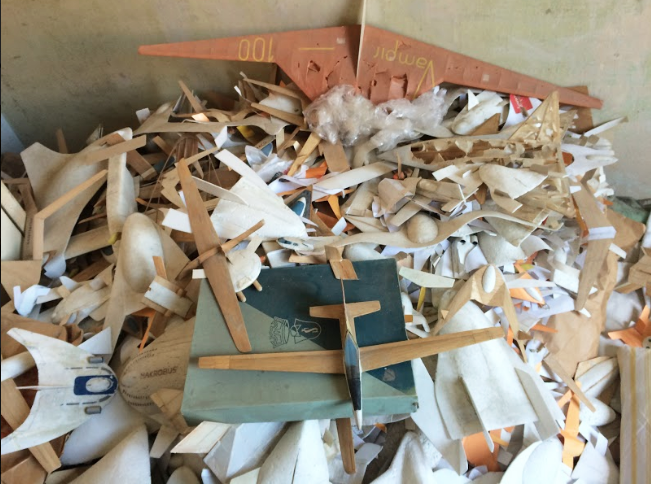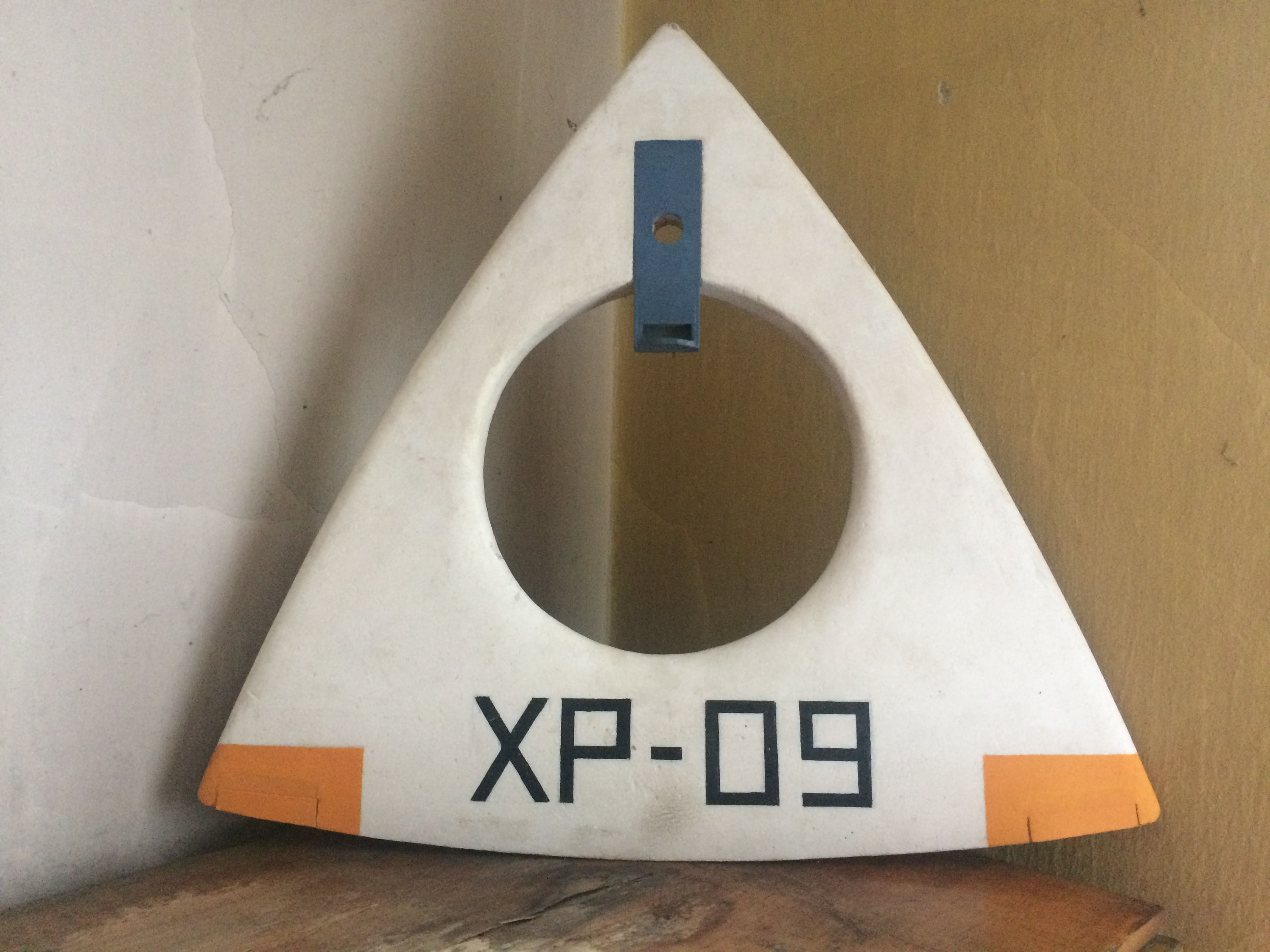Exhibition / PAVEL MAŇKA, LOST AND FOUND
A withdrawn solitaire, experimenter and constructor, a pioneer of the abstract-geometric tendency in Slovakia [1] – this is how the Bratislava artist Pavel Maňka (1929 – 2015) could be briefly characterised. The current exhibition Lost and Found [Straty a nálezy], realized on the occasion of Pavel Maňka’s 90th birthday, which he did not live to see, is conceived as a symbolic “glimpse” into his studio. In the intimate space of the gallery, we try to present at least in fragments his characteristic design (especially aerial and “space” positions) in order to convey it in this way to a wider audience.

Studio of Pavel Maňka, photo: Soňa Sadilková.
Living space
The author’s estate, in its rather clearly structured form [2], contains several layers of (not only artistic) material that would undoubtedly deserve deeper research attention. As a whole, this material is both a path to Maňka’s work and a path to Maňka himself. A glimpse into the artist’s studio and at the same time his home in a house on Pohronská Street in Bratislava helps us to become aware of the conditions, contexts and inspirations that resonated most strongly in his life and work. Walking through this space reveals the deep, meditative concentration of a man – “an ascetic of a kind of his own ism”[3], whose lifestyle and way of working would bear comparison with a monastery. This small piece of Bratislava’s specific architecture, intactly “preserved” for the time being, was Maňka’s hiding place, ritual place and workshop, in which he remains present in several levels of his creativity: both in its most expressive form – in abstract surface and spatial works, but also in urban designs and compositions motivated by his interest in space and science fiction issues, and finally in countless design prototypes – aircraft models, reflecting his lifelong obsession with flying gliders and aeromodelling.
On the way to abstraction
Maňka was not an author “spewing” geysers of ideas. He concentrated his creative potential in one direction – towards developing his own author’s programme, in which he relied on a well-thought-out composition of the whole, a reduction of the colour palette and clean, clear shapes. He gradually purged his works of everything “unimportant” and “superfluous”. Each element, each line in the process of his work took on its maximum meaning and importance. It is obvious that for Maňka himself this constant search for harmony of the whole was also an expression of a kind of life attitude, or an expression of inner conviction towards transcendence. In 1966 he tried to justify it theoretically by saying: “[…] The straight line drawn is actually a piece of infinity, it has a visible continuation in both directions. The serial repetition of certain elements in turn imitates a phase time shift. Just as individual particles of matter are connected by gravity and other forces, in art each piece or composition is created after the realization of a certain idea or concept. Through the action of physical forces, certain laws and creative invention, originals are created leading to the creation of a new artificial nature. Psychotronics has revealed the facts of the existence of a field in every object, a biofield in living beings, and the emanation of positive or negative energy. In the present period I am trying, albeit to a small extent, to enrich art objects with this dimension, so that they radiate a positive field positively affecting the human psyche. […] I think that the results of this almost laboratory experimentation of individuals should be translated into an effort to create a planet-wide aestheticized environment, harmoniously connected to the microcosm and macrocosm.” [4]
Although Maňek’s first, cubist works still revealed his inspiration in the subject world, he gradually moved more and more towards geometric abstraction, interested primarily in solving spatial relationships in the surface.
During my first (and unfortunately last) personal meeting with Pavel Maňka, he still remembered his high school teachers Jozef Chovan and Miroslav Fikari. Apparently, it was the school composition exercises at the Bratislava School of Applied Arts, which he attended in 1946-1950, that were the first impulse on his way to his later abstract-geometric expression.

Pile, photo: Soňa Sadilková.
Constructor and designer
As mentioned by Ľ. Belohradská, the artist’s thinking was “equally embedded in the sphere of art and design.”[5] The design of various new creations, such as the design of a flying “hovercraft” or the model of the central headquarters of the European Union institutions in Brussels (2000), were a kind of release of the artist’s creativity, revealing his desire to at least utopically intervene in large architectural projects.
A special position in Maňka’s work is occupied by his spatial objects – perforated white cubes (e.g. Tribukus and Perfokubus, 1965), based on a play with light and shadow. In these objects, Maňka “does not impose an aggressive op art game on the viewer, but creates a contemplative space for meditation.”[6]

Airoplane, photo: Soňa Sadilková.
Unnoticed
In the past, professional interest in Maňka’s work was aroused mainly by his participation in the Bratislava Confrontations [7] and his affiliation with the Club of Concretists, which he joined in 1968. After the club’s activities were curtailed, he disappeared from the scene and did not exhibit again until after 1990. In spite of his distinct artistic programme and undoubtedly distinctive position in the context of 20th and 21st century Slovak art, Pavel Maňka’s work has not yet been institutionally represented in our country. A significant share of the artist’s unnoticed status was due to his overall personality, his introvertedness – his “downright fatal solitariness.”[8] Another obvious reason is the fact that he “hardly let go” of his things and basically resisted their publication.